This article was co-authored by Kirsten Thompson, MD. Dr. Kirsten Thompson is a Board Certified Psychiatrist, Clinical Instructor at UCLA, and the Founder of Remedy Psychiatry. She specializes in helping patients with mental health conditions such as major depressive disorder, anxiety, ADHD, bipolar disorder, OCD, PTSD, and postpartum depression. Dr. Thompson holds a BS in Operations Research Industrial Engineering from Cornell University and an MD from The State University of New York, Downstate College of Medicine.
There are 25 references cited in this article, which can be found at the bottom of the page.
wikiHow marks an article as reader-approved once it receives enough positive feedback. This article received 21 testimonials and 93% of readers who voted found it helpful, earning it our reader-approved status.
This article has been viewed 323,360 times.
If your daydreaming is interfering with your day-to-day activities, it may be a sign that you need to improve your concentration and save your dreaming for nighttime. In order to reduce your daydreaming, it may help to first understand the extent and purpose of your daydreaming. Then, you can use daydream reduction techniques, increase your focus, and engage in activities that sustain your attention.
Steps
Analyzing your Daydreaming Patterns
-
1Understand the purpose of your daydreaming. Knowing why you tend to daydream is crucial in learning how to change it. If you don't know why something is occurring (what the actual problem is) you may have more difficulty coming to a solution. Sometimes individuals daydream as a way to avoid stress or other painful feelings.[1] This imaginary world allows them to escape and avoid dealing with negative emotional states. Daydreaming can also be used as a way to self-soothe by imagining your wishes fulfilled.[2] In addition, fantasizing can be linked to a need to forget certain information (trauma, painful situations, etc). Daydreaming can actually result in forgetting previously learned information or memories.[3]
- Make a list of the types of daydreams you have, and what you think the function of this fantasy is. For example, you might identify that you frequently daydream about conversations with friends, which helps you predict what might happen and practice how to respond. Another example is if you have daydreams about buying a home, this may help you think of a brighter day and have hope for the future.
- Ask yourself, “what is the purpose of my daydreaming in general?” Do you daydream to escape, distract, make yourself feel better, or pass the time?
-
2Recognize patterns in daydreaming. Understanding the patterns in fantasies you have may assist you in developing a skilled way to reduce each type of fantasy.[4] Do you daydream at school mostly, or at work? Are there certain situations that trigger your daydreaming behavior?
- Recognize how often you daydream. Set your alarm for one hour. Keep a tally of how many times you drifted off into a daydream for that hour. For example, the moment you notice you are daydreaming, write a tally mark on a piece of paper, and so on. This will increase your awareness of how much you actually daydream. Sometimes it may take you a few minutes to realize that you were in a daydream and that is okay, just tally each time you notice that you were drifting off.
Advertisement -
3Identify the negative consequences. If your daydreaming results in difficulties in daily life such as disruption in work or school, interpersonal relationships, or personal obligations, then your daydreaming may be excessive and harmful. Unfortunately, a wandering mind can cause one to feel unhappy.
- List the negative consequences associated with your rich fantasy life. This list could include things like: less time spent with family or friends, falling behind in school due to not being able to stay focused, not being able to get all work done due to being distracted by daydreams, and friends and family feeling like I am not listening to them because I am daydreaming.
Using Daydream Reduction Techniques
-
1Enhance awareness. You must first be aware of your daydreaming when it occurs in order to begin to change it. Once you have identified the purpose, patterns, and consequences of your daydreaming, it may be helpful to start noticing when you are daydreaming in the moment.[5] [6]
- Signs you may be daydreaming include: losing eye contact with someone during a conversation, having difficulty focusing on your current task, not remembering what was just said in a conversation, thinking thoughts unrelated to the current situation, and having imaginary conversations with people or imagining events occurring in your head.
-
2Keep a daydreaming log. Once you have identified that you are daydreaming, stop immediately and write down what you were daydreaming about, as well as the time of day, situation or place you were in, and how long your mind was wandering.[7] [8] This will help you become aware of when you daydream and will help you understand the patterns of your behaviors better.
- Question the utility of the daydream. Ask yourself, is this daydream helping me in some way?
-
3Set guidelines and limits for your daydreams. Certain types of daydreaming can lead to negative outcomes. For example, daydreaming about people whom you do not know very well can increase loneliness.[9] However, imagining people who are close to us can increase feelings of connection and satisfaction with life in general. [10]
- Choose boundaries that, when crossed, signal you to stop daydreaming. Some of them might include intimacy, spending large amounts of money, or extreme violence.
- Sometimes when you are lost in your own dreams and it is wasting your time, just look at your watch. Keeping a watch is a reminder telling you that how precious it is for you make the most of this moment because it won't be back ever again!
-
4Focus your daydream. Mind-wandering can be used to self-reflect and work toward fulfilling personal goals.[11] Imagery and visualization techniques are common in therapy, especially in the treatment of anxiety and depression. In using visualization techniques, you can focus your daydream on something that will be helpful and relaxing for you.
- One example of an imagery exercise is to close your eyes and imagine yourself in a safe place.[12] This place may be a beach, your bedroom, a church or any place that you may feel safe, secure, and relaxed. Imagine how it feels in this place. Notice the temperature, the air, how your body feels, and what other sensations and feelings you have. Imagine what is smells like and sounds like in your safe place. Are there other people in your safe place? What are you doing in your safe place? Stay in your safe place until you are fully relaxed and ready to open your eyes.
- Online resources can help guide you through imagery techniques.[13] [14]
-
5Get up and move around. Right when you notice you are daydreaming, get up and do something active.[15] This serves as a way to get some of your physical energy out, which may in turn, help your mind to re-focus and reduce daydreaming.[16]
- Try stretching. Reach for the sky as high as you can without feeling uncomfortable. Then spread your legs apart while standing and reach toward the ground (just as far as is comfortable for you).
- You can do jumping jacks, run in place, or shake your arms. Try anything active that is safe and appropriate for the place and situation you are in.
-
6Reward yourself for being focused. Every time you are able to complete a task without falling into the daydreaming trap, give yourself a reward. This idea is based on positive reinforcement, a component of operant conditioning, and research has indicated that it increases positive behaviors (such as sustained attention).[17] It also gives you personal boundaries (that you will not do something fun until you complete your task), and something to look forward to (the reward).
- Try giving yourself something you like such as a piece of candy or another snack.
- You can even give yourself a 5 minute break from your work as a reward.Taking appropriate breaks actually increases productivity overall. Use this time to do something you enjoy such as playing a game or texting a friend.
-
7Consider treatment. Excessive daydreaming can become a problem if it causes issues in your personal life such as difficulties in relationships, school, your ability to perform your job, or other daily activities. If this is the case, treatment can be a useful option.[18] [19]
- Contact a psychologist (PsyD, PhD), marriage and family therapist (MFT), or psychiatrist (MD).
Increasing Focus and Attention
-
1Try mindfulness exercises. If you are daydreaming, it means you are focusing on a fantasy or your own thoughts which are not necessarily related to what is currently going on around you. Mindfulness is about being present in the current moment.[20] [21]
- Try to eat a piece of fruit that you enjoy while focusing on how it feels, looks, and tastes.
- Use resources online to learn about mindfulness and try mindfulness techniques.[22]
-
2Use grounding techniques. Grounding helps you detach from emotional pain; it is useful especially when dealing with difficult situations and emotions and can serve as a healthy and useful replacement to daydreaming or fantasizing. Grounding can be done in any situation and at any moment that you choose, and it helps to re-focus your mind. Once you do the grounding exercise, go back to your original duty or task. You may find that you are better able to focus after using a specific grounding technique.
- Name some of the different objects in the room and their different uses.
- You could name some color or animals that you can think of.
- Remember not to spend too much time doing the grounding technique, or you are simply using it as another form of daydreaming. Limit yourself to about 1 minute, and then go back to what you were previously doing.
-
3Get enough sleep. A lack of sleep quality has been associated with increases in daydreaming.[23] If you do not allow your mind to rest at night, it can become over-active during the day.[24] Individuals with sleep issues also experience higher rates of depression, anxiety, and medical problems.[25]
- Develop a sleep schedule (a bedtime and wake-time) and sleep at least 8 hours per night.
- Try relaxation and breathing techniques to help you fall asleep at night.
-
4Take a break. If you find your thoughts are distracting you, it may be helpful to take a break.[26] Sometimes when we are distracted it is an indication that we have been working too hard. Taking breaks can actually increase productivity overall, especially on brainstorming tasks.[27]
- Try going for a walk or a stroll down the street.
- Do something you enjoy for a few minutes, eat a snack, listen to music, or watch something on television.
-
5Involve both your body and mind. If you're someone who begins to daydream when you are not particularly engaged, such as sitting idly, try doing something somewhat active. Fidgeting may actually help individuals with attention issues concentrate better.[28] [29] [30]
- Grab a pillow, stuffed animal, or stress ball that you can fiddle with.
- Some people find that listening to music while working on simple tasks helps them focus.[31] It serves as a partial distraction for the mind, so it can focus on what is important.
Engaging in Activities that Sustain Your Attention
-
1Find new hobbies. Engage in fun activities that you can focus your attention on.
- Do something that inspires you such as: hiking in a beautiful place, meditation, looking at art, etc.
- Try exercise such as: biking, hiking, sports, dance, aerobics, and yoga.
- Avoid activities that may increase daydreaming such as watch television excessively. Watching too much television could possibly lead to decreased creativity and increase daydreaming behaviors.[32]
-
2Talk to a friend or family member. Individuals with adequate social support tend to have higher mental health overall.[33] We need social support to deal with any issue, including excessive mind-wandering or distraction.
- Pick someone that you know very well and feel very comfortable with. Then, ask them if they'd be available to answer their phone and chat with you if you've become particularly engrossed in a daydream.
- You can ask friends or family to alert you if they notice that you are daydreaming. This will help to keep you accountable and increase your awareness of your attention-span.
-
3Plan less, do more. Planning can be a form of daydreaming because you spend a lot of time thinking about a situation and not much time accomplishing anything. It's time stop dreaming and start doing!
- Have a schedule and stick to it. If you find yourself daydreaming, get up and leave the situation or do something productive.
- If you drift into a daydream, gently bring yourself back to what you were doing before your mind wandered. Try to be accepting and non-judgmental of yourself.
Expert Q&A
-
QuestionIs daydreaming too much a disorder?
 Kirsten Thompson, MDDr. Kirsten Thompson is a Board Certified Psychiatrist, Clinical Instructor at UCLA, and the Founder of Remedy Psychiatry. She specializes in helping patients with mental health conditions such as major depressive disorder, anxiety, ADHD, bipolar disorder, OCD, PTSD, and postpartum depression. Dr. Thompson holds a BS in Operations Research Industrial Engineering from Cornell University and an MD from The State University of New York, Downstate College of Medicine.
Kirsten Thompson, MDDr. Kirsten Thompson is a Board Certified Psychiatrist, Clinical Instructor at UCLA, and the Founder of Remedy Psychiatry. She specializes in helping patients with mental health conditions such as major depressive disorder, anxiety, ADHD, bipolar disorder, OCD, PTSD, and postpartum depression. Dr. Thompson holds a BS in Operations Research Industrial Engineering from Cornell University and an MD from The State University of New York, Downstate College of Medicine.
Board Certified Psychiatrist Well, it can be! By its nature, daydreaming is a mild form of dissociation.
Well, it can be! By its nature, daydreaming is a mild form of dissociation. -
QuestionIs it okay to daydream a lot?
 Kirsten Thompson, MDDr. Kirsten Thompson is a Board Certified Psychiatrist, Clinical Instructor at UCLA, and the Founder of Remedy Psychiatry. She specializes in helping patients with mental health conditions such as major depressive disorder, anxiety, ADHD, bipolar disorder, OCD, PTSD, and postpartum depression. Dr. Thompson holds a BS in Operations Research Industrial Engineering from Cornell University and an MD from The State University of New York, Downstate College of Medicine.
Kirsten Thompson, MDDr. Kirsten Thompson is a Board Certified Psychiatrist, Clinical Instructor at UCLA, and the Founder of Remedy Psychiatry. She specializes in helping patients with mental health conditions such as major depressive disorder, anxiety, ADHD, bipolar disorder, OCD, PTSD, and postpartum depression. Dr. Thompson holds a BS in Operations Research Industrial Engineering from Cornell University and an MD from The State University of New York, Downstate College of Medicine.
Board Certified Psychiatrist If your daydreaming persists and is negatively impacting your ability to function at work or home, it is not okay. In this case, consider speaking to your doctor about treatment.
If your daydreaming persists and is negatively impacting your ability to function at work or home, it is not okay. In this case, consider speaking to your doctor about treatment. -
QuestionHow do I stop my addiction to daydreaming?
 Kirsten Thompson, MDDr. Kirsten Thompson is a Board Certified Psychiatrist, Clinical Instructor at UCLA, and the Founder of Remedy Psychiatry. She specializes in helping patients with mental health conditions such as major depressive disorder, anxiety, ADHD, bipolar disorder, OCD, PTSD, and postpartum depression. Dr. Thompson holds a BS in Operations Research Industrial Engineering from Cornell University and an MD from The State University of New York, Downstate College of Medicine.
Kirsten Thompson, MDDr. Kirsten Thompson is a Board Certified Psychiatrist, Clinical Instructor at UCLA, and the Founder of Remedy Psychiatry. She specializes in helping patients with mental health conditions such as major depressive disorder, anxiety, ADHD, bipolar disorder, OCD, PTSD, and postpartum depression. Dr. Thompson holds a BS in Operations Research Industrial Engineering from Cornell University and an MD from The State University of New York, Downstate College of Medicine.
Board Certified Psychiatrist Engaging in practices that ground you and assist in present-moment awareness may help combat excessive daydreaming. Incorporating more physical activities and mindfulness practices into your daily routine often aids in forming a stronger connection between your mind and body, which could leave you less susceptible to daydream spells.
Engaging in practices that ground you and assist in present-moment awareness may help combat excessive daydreaming. Incorporating more physical activities and mindfulness practices into your daily routine often aids in forming a stronger connection between your mind and body, which could leave you less susceptible to daydream spells.
Warnings
- If your daydreams are interfering with your daily life (with school, work, or family), please see your doctor. This may be an indication of attention deficit hyperactivity disorder (ADHD).⧼thumbs_response⧽
References
- ↑ http://somer.co.il/articles/2002Malaptdaydr.contemp.psych.pdf
- ↑ http://somer.co.il/articles/2002Malaptdaydr.contemp.psych.pdf
- ↑ http://libres.uncg.edu/ir/uncg/f/P_Delaney_Remembering_2010.pdf
- ↑ http://www.getselfhelp.co.uk/docs/DRIFT.pdf
- ↑ Kirsten Thompson, MD. Board Certified Psychiatrist. Expert Interview. 18 August 2021.
- ↑ http://www.getselfhelp.co.uk/docs/DRIFT.pdf
- ↑ http://www.getselfhelp.co.uk/docs/SituationLogsheet.pdf
- ↑ http://www.getselfhelp.co.uk/docs/SETBdiary.pdf
- ↑ https://www.researchgate.net/publication/51751132_How_daydreaming_relates_to_life_satisfaction_loneliness_and_social_support_The_importance_of_gender_and_daydream_content
- ↑ https://www.researchgate.net/publication/51751132_How_daydreaming_relates_to_life_satisfaction_loneliness_and_social_support_The_importance_of_gender_and_daydream_content
- ↑ http://www.ncbi.nlm.nih.gov/pmc/articles/PMC3779797/
- ↑ http://www.get.gg/imagery.htm
- ↑ http://www.getselfhelp.co.uk/docs/ImagerySelfHelp.pdf
- ↑ http://www.getselfhelp.co.uk/docs/SafePlace.pdf
- ↑ Kirsten Thompson, MD. Board Certified Psychiatrist. Expert Interview. 18 August 2021.
- ↑ http://imp.sagepub.com/content/18/1/83.short
- ↑ http://www.ncbi.nlm.nih.gov/pmc/articles/PMC1311006/pdf/jaba00085-0053.pdf
- ↑ Kirsten Thompson, MD. Board Certified Psychiatrist. Expert Interview. 18 August 2021.
- ↑ http://somer.co.il/articles/2002Malaptdaydr.contemp.psych.pdf
- ↑ http://www.getselfhelp.co.uk/docs/Mindfulness.pdf
- ↑ Noel Hunter, Psy.D. Clinical Psychologist. Expert Interview. 18 December 2020.
- ↑ http://www.getselfhelp.co.uk/docs/NOW.pdf
- ↑ http://www.ncbi.nlm.nih.gov/pmc/articles/PMC3946719/
- ↑ Kirsten Thompson, MD. Board Certified Psychiatrist. Expert Interview. 18 August 2021.
- ↑ http://ps.psychiatryonline.org/doi/10.1176/appi.ps.56.3.332
- ↑ http://www.scientificamerican.com/article/mental-downtime/
- ↑ https://www.researchgate.net/profile/Paul-Paulus/publication/232593209_Effects_of_Task_Instructions_and_Brief_Breaks_on_Brainstorming/links/00b495277d67be9c22000000/Effects-of-Task-Instructions-and-Brief-Breaks-on-Brainstorming.pdf
- ↑ http://link.springer.com/article/10.1007%2Fs10802-015-0011-1
- ↑ Noel Hunter, Psy.D. Clinical Psychologist. Expert Interview. 18 December 2020.
- ↑ http://www.npr.org/sections/ed/2015/05/14/404959284/fidgeting-may-help-concentration-for-students-with-adhd
- ↑ http://www.getselfhelp.co.uk/docs/Music.pdf
- ↑ http://www.kerenor-chen.co.il/wp-content/uploads/2014/07/Influence%20of%20TV%20on%20Daydreaming%20and%20Creative%20Imagination.pdf
- ↑ http://publish.uwo.ca/~pakvis/StressResourcesSocialSupportonMentalHealth.pdf
About This Article
To keep from excessively daydreaming, try getting up and moving around when you start dreaming as this uses up physical energy and can help you refocus mentally. Additionally, try taking breaks every hour from your work for 5-10 minutes, which will improve your productivity. You could also try grounding techniques, which help refocus your mind. For example, try to think of as many objects in the room and their uses within a minute, then return to the task you were working on. For tips on when it might be best to seek treatment for excessive daydreaming, keep reading!

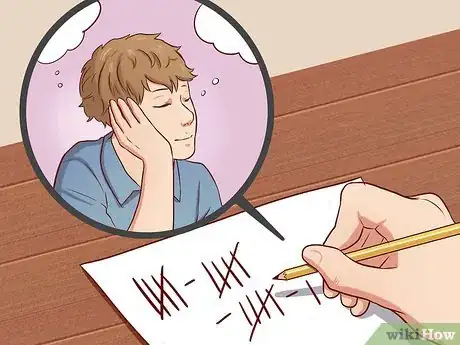
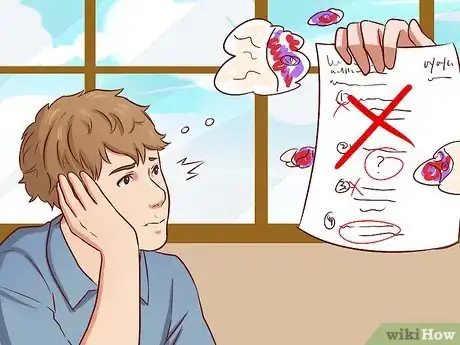











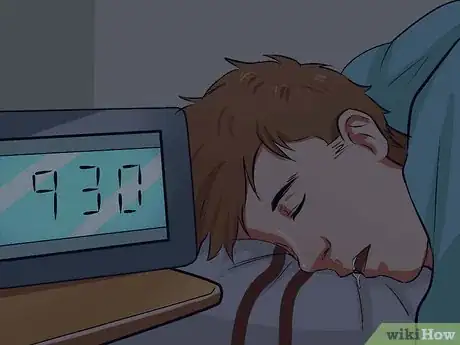




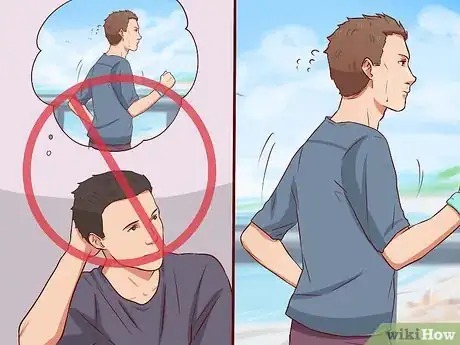
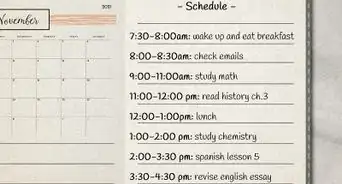






















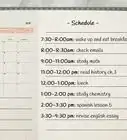






































Medical Disclaimer
The content of this article is not intended to be a substitute for professional medical advice, examination, diagnosis, or treatment. You should always contact your doctor or other qualified healthcare professional before starting, changing, or stopping any kind of health treatment.
Read More...